Considering using a UV light to treat your well water supply?
Here, we’ve shared everything you should know about UV water purification for private well water, including how it works, the outcome it achieves, its benefits and setbacks, and more.
📌 Key Takeaways:
- A UV lamp treats water with UV rays, which damage the DNA of bacteria, viruses, and other pathogens, so they don’t have harmful effects when ingested in drinking water.
- Ultraviolet water purifiers can effectively kill microorganisms that pose health risks in well water.
- While UV systems are a good way to protect private wells from pathogens, they don’t remove physical contaminants, like heavy metals, chemicals, and other pollutants.
Table of Contents
- 🔎 What Is A UV Water Purifier?
- 🤔 Why Purify Your Well Water With UV?
- ✅ What Can UV Light Do To Well Water?
- ⛔️ What Can’t UV Light Do To Well Water?
- 🔬 How Effectively Can UV Light Treat Well Water?
- ⚖️ Pros And Cons Of UV Light For Well Water
- 📝 Considerations To Make When Choosing A UV Water Purifier For Well Water
- 🔚 Final Word
🔎 What Is A UV Water Purifier?
A UV water purifier is a water treatment device that’s used to disinfect water by killing certain microorganisms.
UV water systems consist of a few key components:
- A UV lamp – Emits ultraviolet light, which kills microorganisms
- A UV quartz sleeve – Protects the lamp and allows the UV light to pass through
- A stainless steel chamber – Houses the lamp and provides a passage for water to travel through
A UV water filter system is typically installed as a point of entry unit, meaning that it disinfects the water that is used throughout your home’s plumbing system. That means the water you wash with, cook with, drink, and use in all your appliances is microbiologically safe.
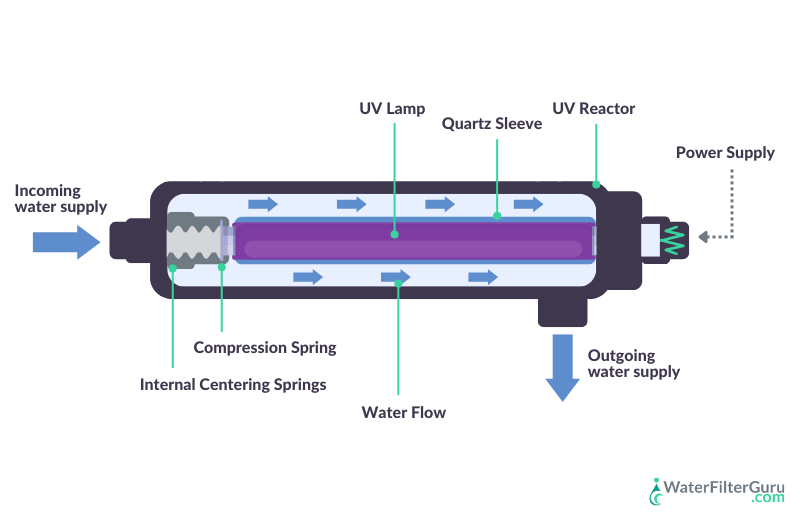
🤔 Why Purify Your Well Water With UV?
You’ll need to purify your well water if it contains, or is at a high risk of containing, microorganisms that could make you sick.
Purifying your well water with UV will protect you from the harmful health effects of disease-causing bacteria, viruses, cysts, and other waterborne microorganisms.
UV water purifiers are great for purifying water because, unlike chemical disinfection (such as chlorine), they don’t add harmful chemicals to your water, and they don’t produce disinfection byproducts.
UV water treatment is natural and easy to maintain because it doesn’t add anything to your water and it just needs an ultraviolet light to work.
It’s your responsibility to purify your well water with a UV purification system or a similar disinfection method if necessary.
💡 Well water isn’t regulated by the EPA, and it’s not treated by water treatment plants, which means it’s down to you to make your water safe to drink – and that includes killing harmful microorganisms.
✅ What Can UV Light Do To Well Water?
UV light is designed to kill microorganisms in drinking water.
Harmful bacteria, viruses, protozoan cysts, and other microorganisms are all effectively killed by UV light.
UV water disinfection works by penetrating the cell walls of these pathogens, where the ultraviolet light scrambles their DNA, preventing them from reproducing or making you sick.
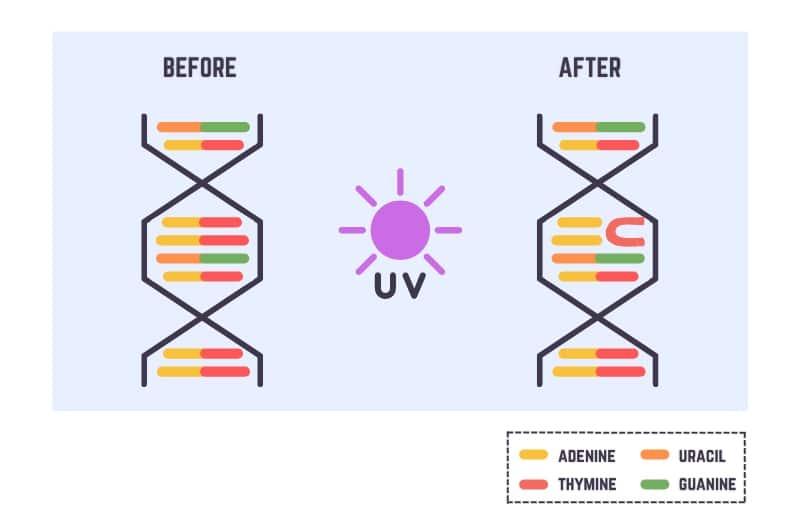
⛔️ What Can’t UV Light Do To Well Water?
There are a few things that UV light can’t do for well water:
- Remove microorganisms. UV light doesn’t remove microorganisms – it simply damages their DNA and prevents them from making you sick if you ingest them in water.
- Kill all microorganisms. While UV is one of the most effective water purification methods, it may be unable to penetrate some thick-walled microorganisms, like giardia and cryptosporidium.
- Remove physical contaminants. UV light can’t remove any physical contaminants, like iron, nitrates, and other common well water contaminants.
🔬 How Effectively Can UV Light Treat Well Water?
UV light can treat well water with 100% effectiveness – as long as a few conditions are met.
For UV water purifiers to effectively treat any water source, the water should be non-turbid, meaning that it appears transparent and doesn’t have any murkiness, floating sediment, rust, or any other particles that affect its color or clarity.
For this reason, you might need to treat your well water with a pre-treatment whole house filter to remove any contaminants that impact your water’s turbidity, including:
- Sediment (sand, silt, dust, dirt, rust, etc.)
- Tannins
- Colored organic compounds
- Algae
- Other tiny organic and inorganic matter
You can get your water tested to determine what it contains, then decide on the right method of treatment if you haven’t already employed a water filter to remove these contaminants.
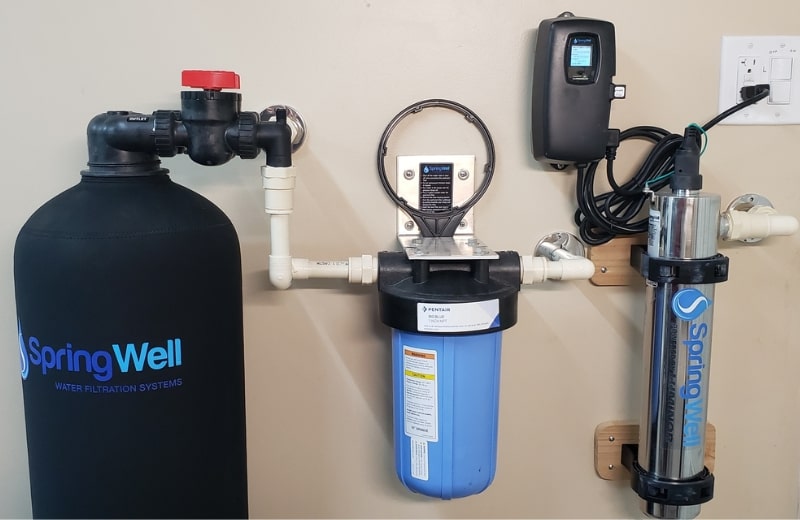
⚖️ Pros And Cons Of UV Light For Well Water
Below, we’ve shared the pros and cons of a UV filter for well water.
Pros
Chemical-Free
The biggest advantage of UV water disinfection is that it’s a chemical-free method of disinfecting water.
The common alternative to ultraviolet disinfection for well water is a chlorine injection system, which treats the water with chlorine (a common disinfectant) which must then be reduced with an additional activated carbon filter.
With a UV system, you don’t have to worry about drinking traces of chemicals in your water because the method of UV purification is chemical-free.
Easy To Maintain
A UV system is one of the easiest-to-maintain water treatment solutions for well water.
The system has a lamp that needs to be replaced once a year on average (many systems have an interface that tells you the remaining lamp life) and a UV sleeve that needs to be cleaned occasionally and replaced every 2-3 years.
That’s it – you don’t have to change any filters, flush the system, or do any other sort of regular maintenance. Plus, the system doesn’t backwash or waste water.
Effective Protection
If you send clean, pre-treated well water through your UV water purifier, the system should work effectively every time to kill microorganisms in your water.
That makes UV filters a great solution to have on hand for just-in-case scenarios. Your well water might not test positive for microorganisms, but having a dedicated disinfection system in place will give you the peace of mind that if something changes with your water quality in the future, you’re protected.

Doesn’t Affect Water Flow Rate
Another key advantage of UV purifiers is that they don’t affect the flow rate of water through your plumbing.
Water filters act as a barrier, slowing the flow of water as it passes through the filter media. UV lamps, on the other hand, simply treat water with UV waves as it flows through the lamp housing.
Water doesn’t need to be slowed down to be effectively treated with UV light, which means you won’t notice a drop in your flow rate and water pressure after installing a UV purification system.
Doesn’t Alter Water Taste Or Smell
Because UV water filters don’t add anything to your drinking water, they won’t affect its taste or smell.
Chemical disinfection gives water an unpleasant “swimming pool” taste, but water treated by UV should taste no different than it did prior to treatment because the water aesthetics haven’t changed.
Cons
Can’t Be Used For Turbid Water
The biggest setback of UV systems is that they require an unobstructed path through water, which means they’re not effective when used to treat turbid water.
If your water is turbid (as many well water supplies are), the particles causing the turbidity will shield the microorganisms from the UV light, allowing them to remain in the water without being altered.
You’ll need to use a pre-treatment solution to remove the turbidity before you send water through the UV water filter.
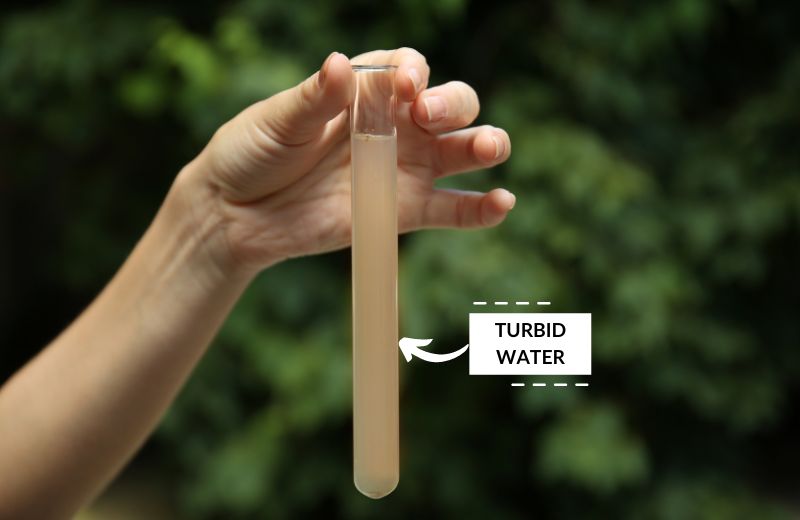
Doesn’t Address Physical Contaminants
As we mentioned earlier, a UV filter won’t address physical contaminants in your well water.
So, if your well contains iron, manganese, nitrates, tannins, pesticides, arsenic, or hardness minerals, you’ll need to buy a separate treatment system that addresses these contaminants.
Expensive
Whole-house systems that use UV water purification are expensive, often costing more than $600 upfront.
There are ways to get a better deal on a UV system, such as buying a filtration system with a UV lamp as an add-on, which the manufacturer will often sell at a lower cost as an upsell.
But you’ll still need to spend a few hundred dollars, which might sting if you’ve already recently invested in other filtration methods, such as a whole house system for iron or tannins.
📝 Considerations To Make When Choosing A UV Water Purifier For Well Water
Before you buy a UV water treatment system for your well water, consider the following things:
UV Dose
The UV dose, or UV intensity, is a measure of the intensity of the ultraviolet rays that are used to treat the water.
Most UV water purification systems for drinking water treatment have a pre-set UV dose that’s between 50-150 mJ/cm2 – an efficient dosage to kill the majority of waterborne pathogens.
Point Of Entry Vs Point Of Use
Also decide whether you’d rather have a point of entry (POE) UV water system, or a point of use (POU) system.
POE systems are the better option for most well water applications because they destroy microorganisms in the water that flows around your whole house, including the water that you use in all appliances and fixtures. They may be standalone, but they’re commonly tacked on to the end of a whole house water filter system.
POU UV purifiers are typically installed as final stages in under-sink or countertop filter. They target contaminated water that’s delivered to your kitchen faucet, but they won’t provide clean water to your whole home.
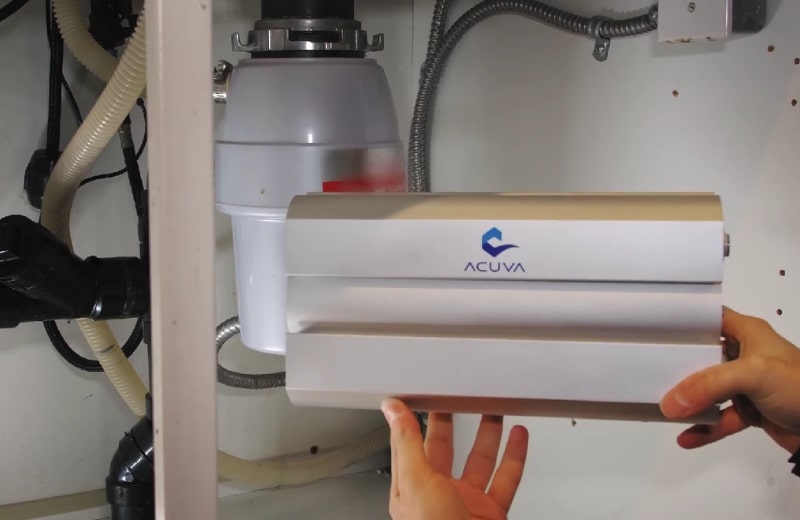
Installation And Maintenance
UV systems are relatively easy to install. The speed of the process depends on the quality of the installation instructions and the install location, but most UV purifiers have a simplistic design and can be installed in less than an hour.
We’ve already mentioned that UV purifiers don’t require a lot of maintenance, but that doesn’t mean they’re maintenance-free.
Proper maintenance is essential if you want to continue to protect your family from harmful pathogens with health concerns in your well water supply.
This includes annual replacement of the lamp and occasional cleaning of the glass sleeve.
If you don’t want to commit to any sort of maintenance, a UV system might not be for you.
Pre-Treatment Required
As we mentioned earlier, UV light can’t effectively purify turbid water. So, if your well water is turbid, murky, or sediment-rich, you’ll need to install a pre-filter to make your water suitable for UV purification.
Pre-treatment methods depend on the contaminants that are making your water turbid. If tannins are to blame, look for a dedicated tannins water filter. Or, if your water contains sand and dirt, use a whole-home sediment filter to remove these impurities.
Additional Treatment Needed
Your well water might contain physical contaminants that don’t hinder the UV purification process, but might need to be removed to improve your water quality.
In this case, you’ll need to invest in an additional water filtration system.
For instance, if you have a lot of iron or manganese in your water, you’ll benefit from installing an oxidation filter system. Or, if your water is very hard, you should consider a water softener.
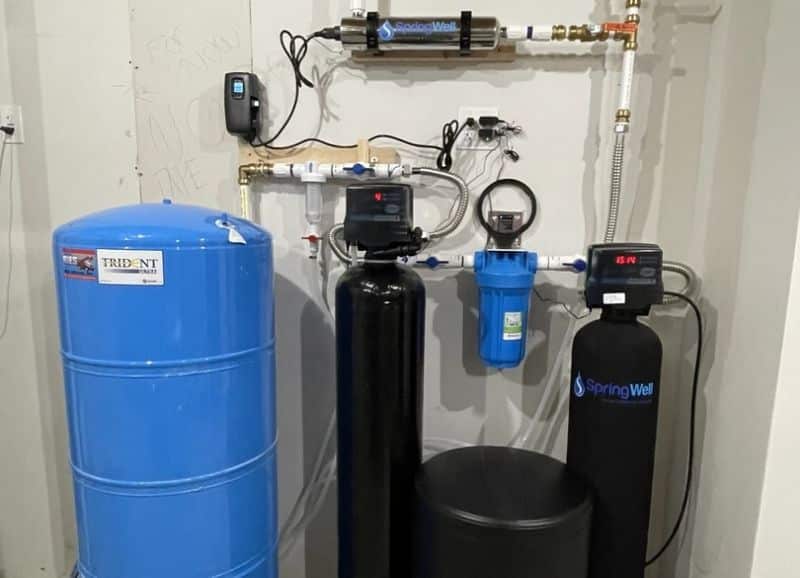
Related Readings:
- Top 6 UV Water Purifier Systems to Consider in April 2024
🔚 Final Word
UV treatment is one of the best ways to kill microorganisms in a private well water supply, but it doesn’t physically remove contaminants commonly found in wells, such as heavy metals, organic chemicals, and hardness minerals.
Make sure to test your water if you don’t already know exactly what it contains. From there, you can decide on which water filtration systems you may need alongside a UV lamp to remove other contaminants affecting water quality.


Good afternoon
I am hoping you can help check my logic on a calculation to determine the value of my whole home POE system. The price of my UV, plus 5-micron filter, plus GAC filter system is $1,355 (not installed) which is $3.71/day over a year’s time. The lifespan of a UV light is under 9,000 hours or 1 year. according to the manufacturer’s invoice. The cost for replacing just the UV light is not known, yet. My system is rated up to 10 gpm flow and would have a probable maximum daily use of 3 hours for our home. Therefore, the value of this system is $0.0021/gallon of water treated for a typical day’s use.
First, does this make sense? Second, if this logic is correct, can the cost of other biocide treatment technologies for waterborne bacteria be valued using the same methodology for comparison?
Thank you and hope to hear from you soon.
Kelly Williamson
Hey Kelly,
You’re on track, but I’d recommend calculating based on actual water usage in volume (gallons). Once you have the daily volume of water your family uses, you can then re-run the calculation. Alternatively, you can use the industry standard estimate of 70 gallons per day, per person in the household.
You can also calculate the cost of chemical treatment using volume of water treated and cost of equipment to determine comparable cost per gallon.